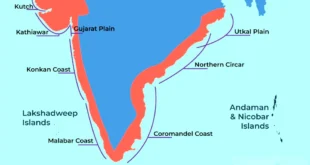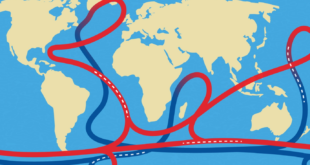The Ministry of Culture (MoC) and Ministry of Ports, Shipping and Waterways (MoPSW) signed a Memorandum of Understanding (MoU) for ‘Cooperation in Development of National Maritime Heritage Complex (NMHC)’ at Lothal, Gujarat.
Important points:
- NMHC will be developed in Lothal region of Gujarat.
- It would be developed as an international tourist destination, where the maritime heritage of India from ancient to modern times would be showcased.
- The idea is to create an edutainment (education with entertainment) approach for this destination that would be of great interest for the visitors.
- It is going to cover an area of 400 acres, with structures such as Heritage Theme Park, National Maritime Heritage Museum, Lighthouse Museum, Maritime Institute, eco-resorts, and more.
- There will also be many pavilions where all coastal states in India and union territories can showcase their artifacts and maritime heritage.
- The unique feature of NMHC is the recreation of ancient Lothal city, which is one of the prominent cities of the ancient Indus valley civilization.
Lothal:
- Lothal was one of the southernmost cities of the ancient Indus Valley Civilization located in Gujarat.
- Construction of the city began around 2400 BCE.
- According to the Archaeological Survey of India (ASI), Lothal had the world’s earliest known dock, which connected the city to an ancient course of the Sabarmati river on the trade route between Harappan cities in Sindh and the peninsula of Saurashtra.
- Lothal was a vital and thriving trade Centre in ancient times, with its trade of beads, gems, and valuable ornaments reaching the far corners of West Asia and Africa.
- The techniques and tools they pioneered for bead-making and in metallurgy have stood the test of time for over 4000 years.
- The Lothal site has been nominated as a UNESCO World Heritage Site, and its application is pending on the tentative list of UNESCO.
Indus Valley Civilization
- Also known as Harappan Civilization that flourished around 2,500 BC, in the western part of South Asia, in contemporary Pakistan and Western India.
- It was home to the largest of the four ancient urban civilizations of Egypt, Mesopotamia, India and China.
- It was basically an urban civilization and the people lived in well-planned and well-built towns, which were also the centers for trade.
- They had wide roads and a well-developed drainage system.
- The houses were made of baked bricks and had two or more storeys.
- The highly civilized Harappans knew the art of growing cereals, and wheat and barley constituted their staple food.
- By 1500 BC, the Harappan culture came to an end. Among various causes ascribed to the decay of Indus Valley Civilization are the recurrent floods and other natural causes like earthquakes, etc.
SOURCE: THE HINDU,THE ECONOMIC TIMES,MINT
 Chinmaya IAS Academy – Current Affairs Chinmaya IAS Academy – Current Affairs
Chinmaya IAS Academy – Current Affairs Chinmaya IAS Academy – Current Affairs



